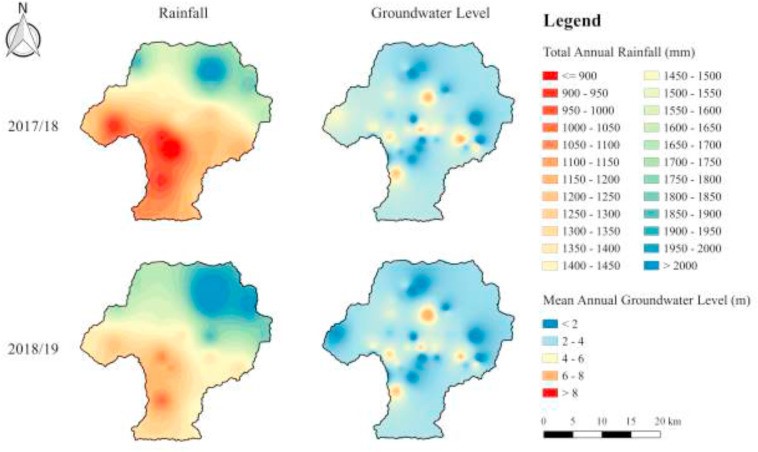In states like Delhi, Rajasthan, Telangana and Tamil Nadu, the number of wells having groundwater at greater depth have increased according to a government report

A Persian Wheel system used to draw groundwater in Rajasthan, a state where water levels have declined according to the report. Photo: Wikimedia Commons
Groundwater tables on the whole in India are stable but the situation in some states is grave, according to the Central Groundwater Board (CGWB)’s latest report. Most wells showed a decline in the level of groundwater.
Around 162.22 million cubic meters of water are still available for irrigation according to the Ground Water Year Book – India 2017-18. This is the same as the last evaluation in 2016-17.
A comparison of groundwater levels in India pre-monsoon 2017 with the decadal mean of pre-monsoon (2007-2016), indicates that out of 14,465 wells analysed by the CGWB, around 61 per cent of wells show a decline in water levels.
More than 60 per cent of wells show a fall in groundwater levels in states and Union Territories (UTs) like Chandigarh, Punjab, Puducherry, Uttar Pradesh, Tamil Nadu, Andhra Pradesh, Dadra and Nagar Haveli, Haryana, Himachal Pradesh, Jammu and Kashmir, Karnataka, Kerala and Meghalaya.
Among the 16,078 wells monitored by the CGWB during pre-monsoon, the number of wells showing the depth of groundwater at more than 40 meters below ground level (mbgl) decreased by 49 in 2017-18 in comparison to 2016-17.
But there are specific states where the number increased.
For instance, in Delhi, the number of wells having groundwater at more than 40 mbgl was 10 in 2016-17. But it increased to 13 in 2017-18.
In Rajasthan, the number of such wells was 164 in 2016-17, which increased to 174 in 2017-18. Similarly, in Telangana, the number of such wells was eight in 2016-17 and this has increased to eleven in 2017-18.

Photo Credit: ScienceDirect.com
Tamil Nadu also shows an increase in the number of such wells between these two periods. But there are states like Haryana and Madhya Pradesh which show a decrease in the number of such wells across these two periods.
The assessment also shows that the lowest depth at which groundwater was recorded during the pre-Monsoon of 2017 was 134.2 mbgl, which is almost 18.8 meters higher than the lowest recorded in 2016-17 in Ahmednagar district, Maharashtra.
Around 1,034 administrative units (including blocks, taluks, mandals, districts, firkasand valleys) across India have been categorized as ‘over-exploited’, 253 as ‘critical’, 681 as ‘semi-critical’, and 4,520 as ‘safe’.
The report adds that the number of over-exploited and critical administrative units is significantly higher in Delhi, Haryana, Himachal Pradesh, Karnataka, Punjab, Rajasthan, Tamil Nadu and Uttar Pradesh.
Comparing the state of groundwater in different states and UTs during 2016-17 and 2017-18, it is seen that out of the 6,584 blocks assessed, there has been no change in the number of semi-critical, critical or over-exploited blocks in these two periods and around 69 per cent of the blocks had been categorized as safe blocks in both the periods.
Vardhman Envirotech
India’s Passionate rainwater company
This article is published on: Down to Earth, 31 July, 2019
We would like to spread this for the benefit of fellow Indians.
